Wondering what flightless birds look like? Here’s a cool list of birds that cannot fly.
The need to adapt to a new environment led many birds to evolve some abilities and lose others. The ability to fly was one of them.
In today’s article, we’ll talk about not only several non-flying birds that live around the world but also some extinct flightless birds.
But first, let’s answer the question, “what are flightless birds?”
What Are Flightless Birds?
Flightless birds are birds that lost their ability to fly through evolution. Due to the isolation on predator-free islands and lack of competition, they experienced morphological and behavioral changes to adapt to this new environment.
For instance, New Zealand has more species of flightless birds than any other such location.
Two key differences between flying and flightless birds are the smaller wing bones and flight muscles. Also, the energy required for flight increases proportionally with body size, which is often why flightlessness in birds coincides with heavy bodies.
In return, these creatures experienced an enlargement of the pelvic girdle and developed more muscular legs for running (seen in ostriches), developed better plumage camouflage (like kiwis), or specialized feet for swimming (seen in penguins).
All of these morphological changes were necessary to survive on the ground.
Flightless Birds List
Here’s a list of extant birds that can’t fly:
Ostrich
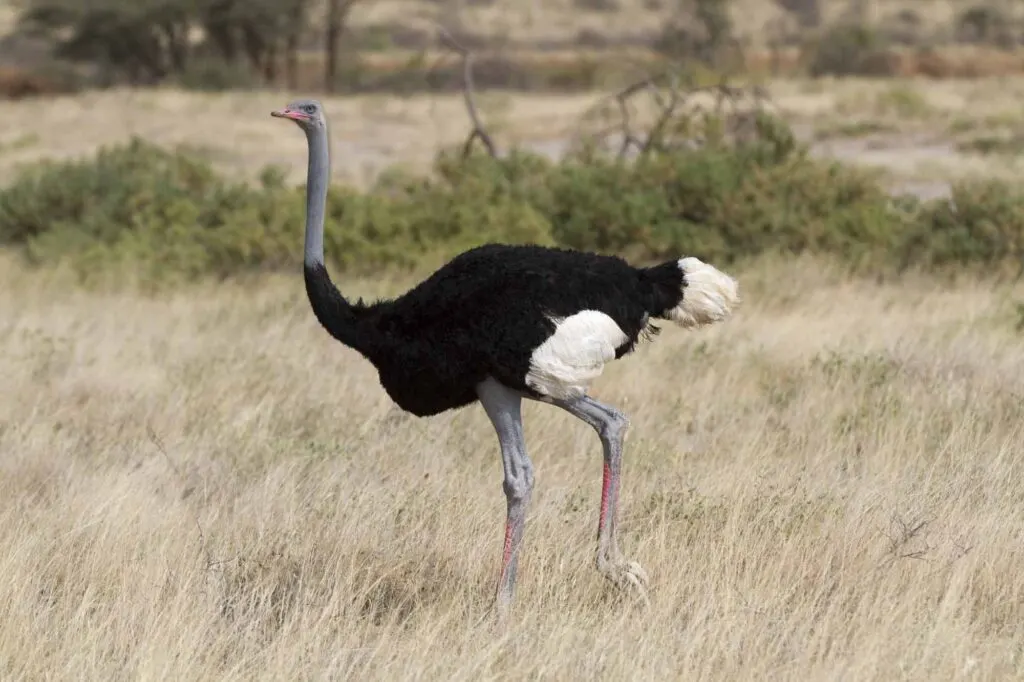
Ostriches are the heaviest and tallest flightless birds. They can sprint at an astonishing speed of 60 miles per hour, making them the fastest animals on land.
They are not only excellent sprinters but also great kickers. They can deliver up to 2,000 PSI of raw kicking power—that’s a strong animal!
The two living species are the Somali ostrich (Struthio molybdophanes) and the common ostrich (Struthio camelus)—both native to Africa.
One of the most significant reasons for these animals’ pace is they possess a springy step.
Another reason they can sprint so nicely is their ‘center of gravity,’ that is, between their wings and legs. So these running birds can be pretty balanced when operating at high rates, but because of their weight and body structure, they can’t fly.
Emu
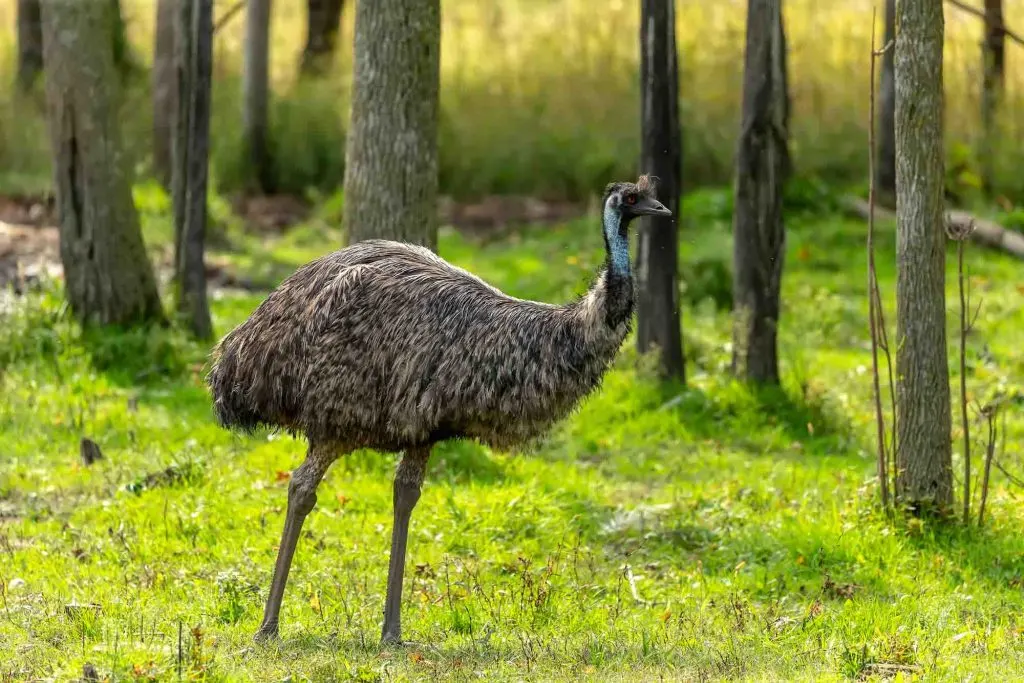
Among the largest non-flying birds from Australia, emus (Dromaius novaehollandiae) average height ranges from 4.9 to 6.2 feet, and they can weigh up to 132 pounds.
These large flightless birds have strong legs, enabling them to run at speeds close to 31 miles per hour.
Because these birds look like ostriches, many people confuse both species. Emus usually prefer to lead a solitary life but may form a group if needed. Their diet consists of fruits, flowers, seeds, insects, and smaller vertebrates.
Cassowary
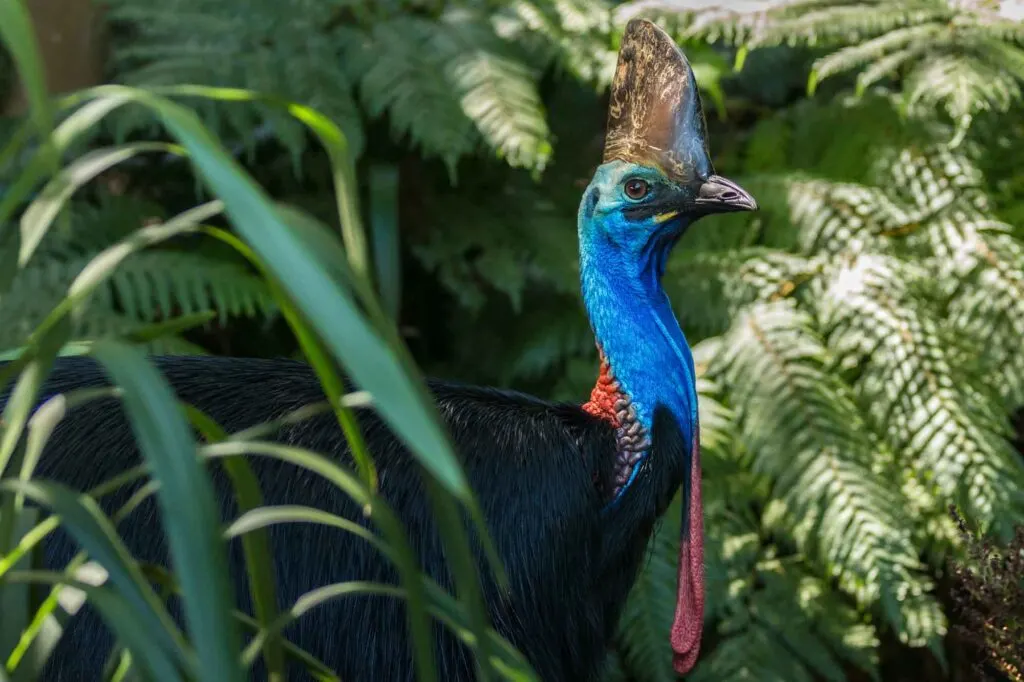
Among the largest and tallest flightless birds, cassowaries have large black bodies and colorful necks and heads.
Currently, three flightless species are extant: southern cassowary (Casuarius casuarius), northern cassowary (Casuarius unappendiculatus), and dwarf cassowary (Casuarius bennetti).
Their name translates to ‘horned head,’ referring to the pointed casque on the bird’s head, which makes them quite weird birds.
These flightless birds rank second among the biggest birds in the world in body weight. A close relative of the emu, these birds that cannot fly are found in some parts of Australia, including Queensland and New Guinea.
Although the diet of these magnificent birds consists mainly of fallen fruits, they are also known to feed on insects and small vertebrates.
Rhea
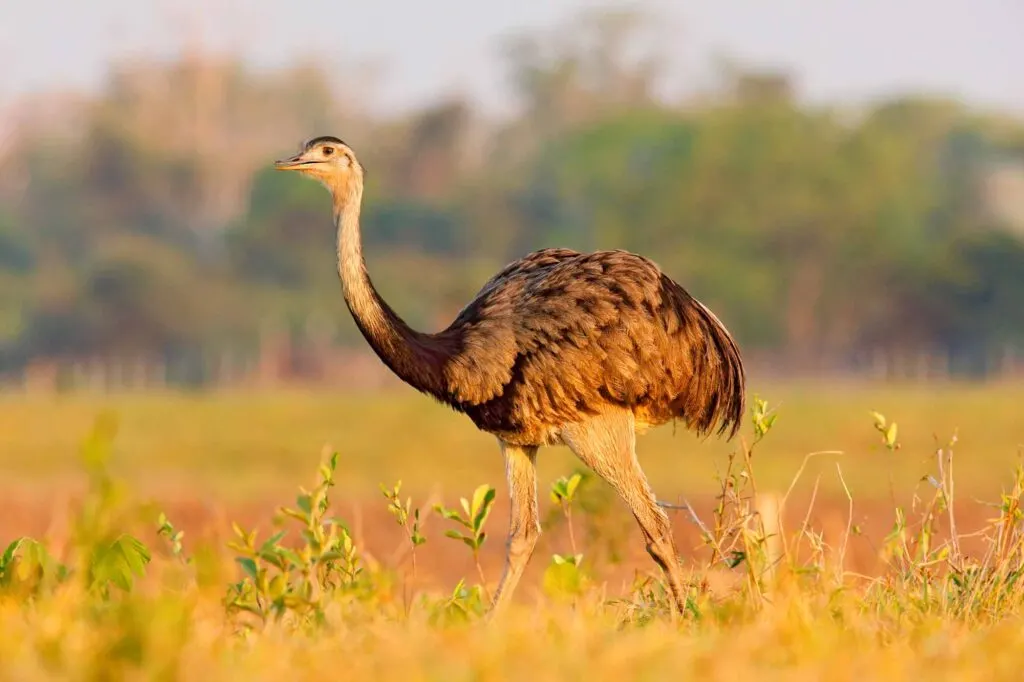
The largest bird species found in South America, the greater rhea (Rhea americana), is a flightless bird that can reach a height of around 4.9 feet in adulthood. The male birds are larger and heavier than the females and weigh close to 60 pounds.
Another extant species is the lesser or Darwin’s rhea (Rhea pennata).
Although these birds cannon fly, rheas can run very fast and reach the speed of up to 40 miles per hour. Wings provide stability for these running birds.
Greater rheas are omnivorous birds that feed on various fruits, seeds, leaves, lizards, insects, and even small birds. They lay golden-colored eggs, which fade and turn white with time.
Kakapo
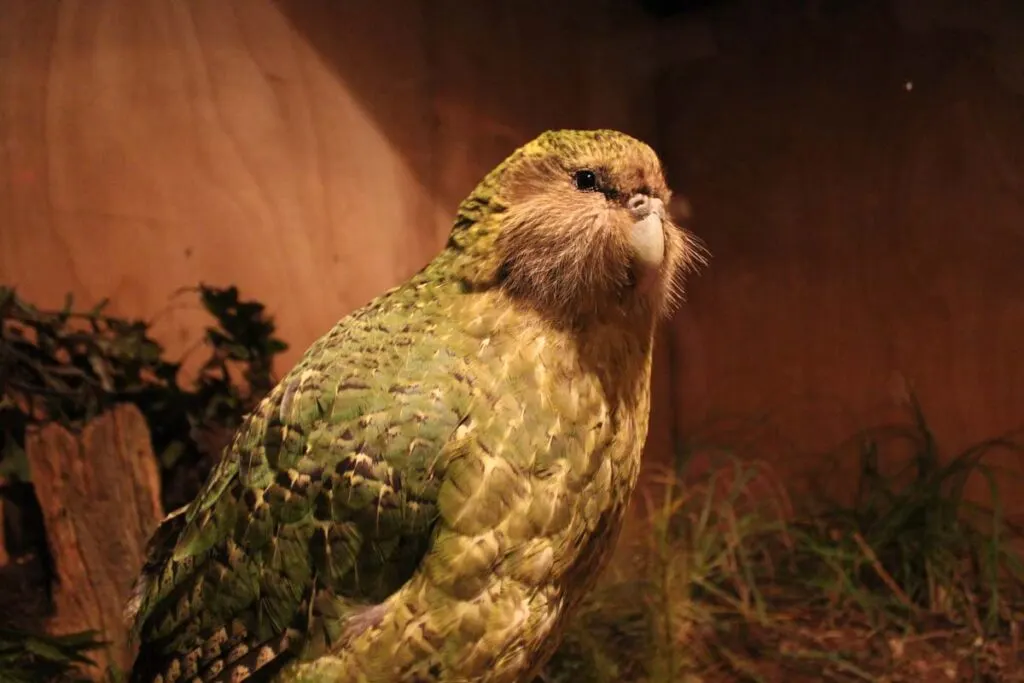
The only flightless parrot in the world, kakapos (Strigops habroptilus) hike and climb to travel. They use their wings to retain balance, so they tend to be softer since they aren’t of use for flying.
Their primary tactic while dealing with predators is to freeze on the spot, hoping they will blend into the background.
These large flightless birds are native to New Zealand and are critically endangered.
They grow to up to 2 feet in length and weigh up to 6.6 pounds, making them the heaviest parrots in the world.
Kiwi
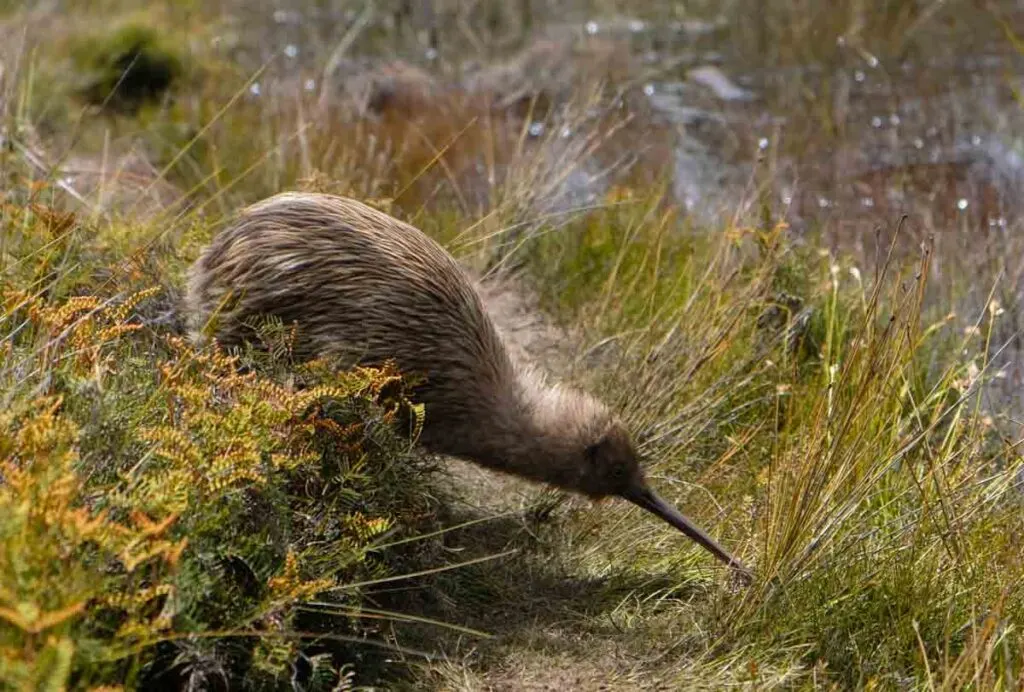
Kiwi is a flightless bird native to New Zealand and can be found in South Island, West Coast, and Northwest of Nelson territories.
They are brown chicken-sized birds that can reach up to 10 inches tall and weigh around 3 pounds.
There are five flightless species of kiwis throughout their range:
- Great spotted kiwi (Apteryx haastii)
- Little spotted kiwi (Apteryx owenii)
- Okarito brown kiwi (Apteryx rowi)
- Southern brown kiwi (Apteryx australis)
- North Island brown kiwi (Apteryx mantelli)
They like to stay in wet and steep areas surrounded by trees and forests.
Kiwi is an omnivore animal, meaning that it can consume everything. However, they prefer to eat leaves, berries, worms, fungi, catfish, and frogs. As for land predators, those birds that cannot fly are often victims of stoats, cats, ferrets, and dogs.
Curiously, research published in 2013 found that an extinct genus, Proapteryx, was smaller and probably capable of flight, supporting the hypothesis that the common ancestor of the kiwi reached New Zealand independently from moas, which were already large and flightless by the time kiwi appeared.
Penguin
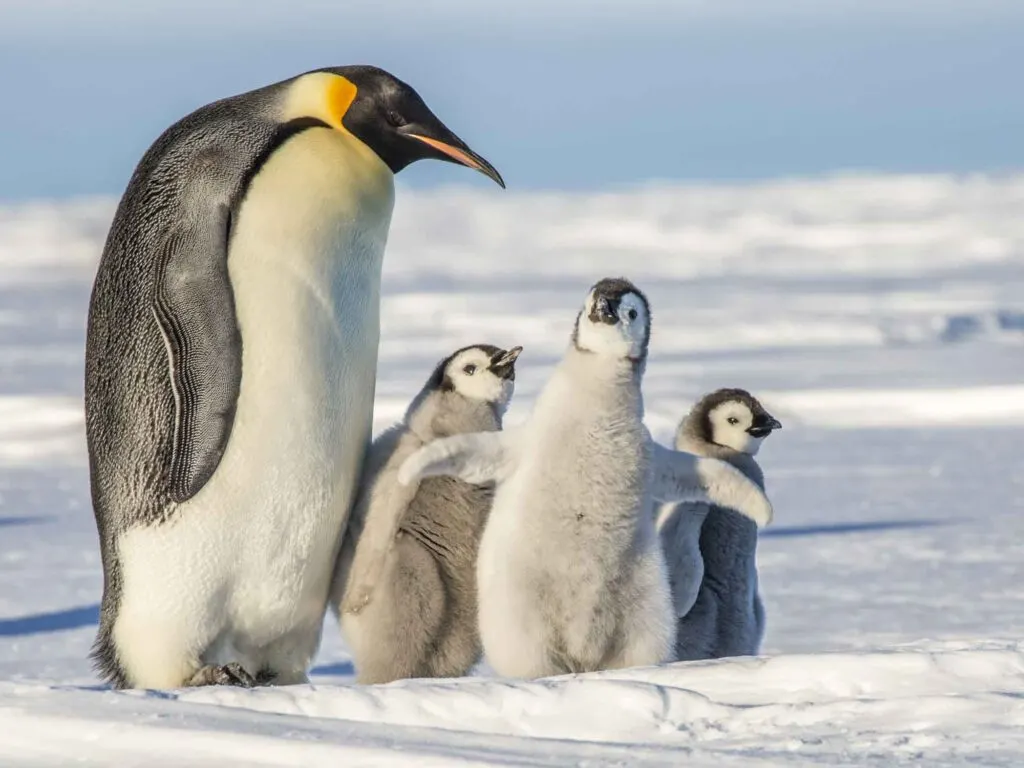
Penguins are cute and chubby non-flying birds typically found in the Southern hemisphere.
Depending on the species, they can be found in various locations, including New Zealand, Australia, Antarctica, and the sub-Antarctic Islands. Their habitat is generally ocean coasts. Other than the ocean, some also inhabit seaside areas.
Penguins’ size varies and greatly depends on the species. The height falls between 15 inches to 3.5 feet and can weigh anywhere between 2 to 88 pounds.
Penguins’ diet mainly includes shrimps, krill, squid, fish, and crustaceans. These aquatic, flightless birds choose the areas which are safe from predators, and therefore, the threat from land is minimal.
However, the eggs and baby penguins are often victims of giant petrels, skuas, and other birds. In water, these flightless birds are threatened by killer whales and leopard seals.
Currently, there are 19 species of penguin, with the emperor penguin being the largest and the little blue penguin the smallest.
Steamer Duck
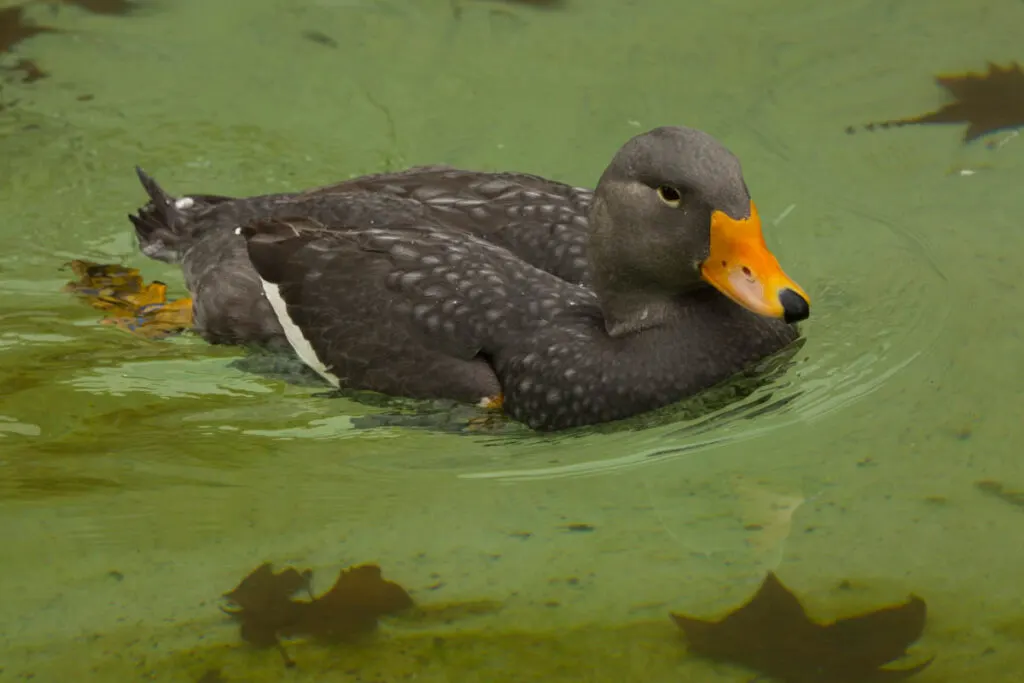
Steamer ducks belong to the Anatidae family and consist of four species. Except for the flying steamer duck, these birds can not fly.
The flightless bird species are:
- Flying steamer duck (Tachyeres patachonicus) – flying species
- Fuegian steamer duck (Tachyeres pteneres)
- Falkland steamer duck (Tachyeres brachypterus)
- Chubut steamer duck (Tachyeres leucocephalus)
These non-flying birds grow up to 33 inches and can weigh up to 15.4 pounds.
These flightless ducks inhabit the territories of Chile, Argentina, and the southern part of South America.
They enjoy being on coastal islands and rocky coasts. Yet, when breeding, they move on to the inland lakes and bays.
Those non-flying birds typically eat crustaceans and mollusks and dive to catch food. Potential predators of steamer ducks include American mink, Caracara, and Fuegian culpeo fox.
Weka
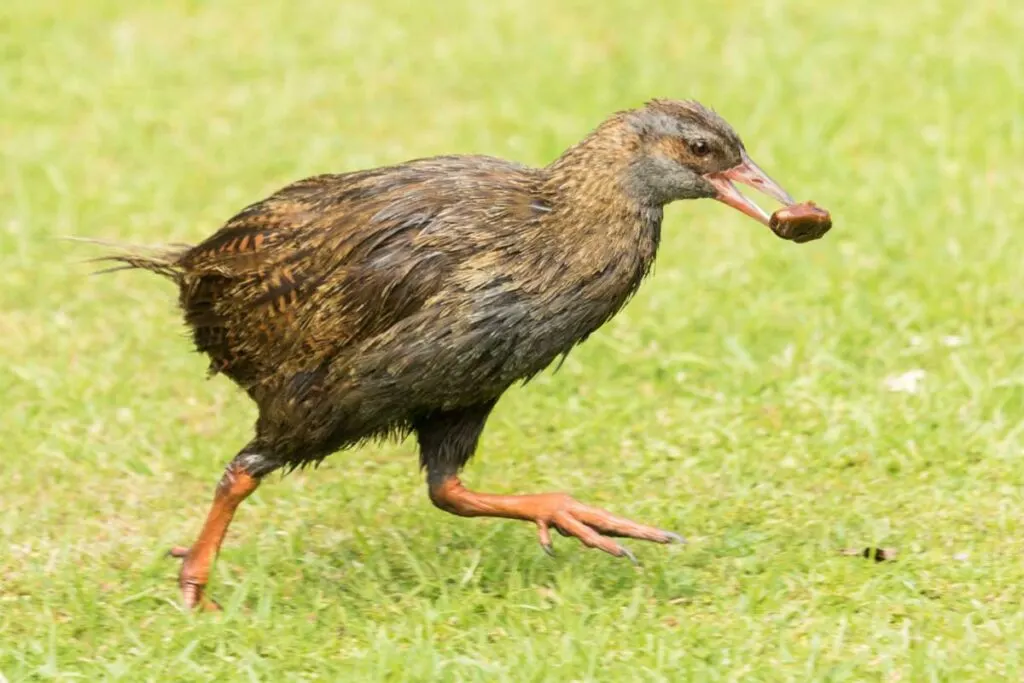
Wekas (Gallirallus australis) are flightless birds of the rail family. Males are typically larger and can reach up to 24 inches tall and 3.5 pounds. As for females, they are 20 inches tall and weigh 2.8 pounds.
These birds are found in dunes, rocky shores, grasslands, forests, and semi-urban environments. Endemic to New Zealand, wekas are the only remaining species in their genus, Gallirallus.
Weka’s diet consists of fruit and invertebrates. However, these birds that cannot fly have been seen to also consume carrion, eggs, rodents, lizards, ground-nesting birds, and food scraps. Wekas can become victims of stoats, dogs, ferrets, and cats.
Takahe
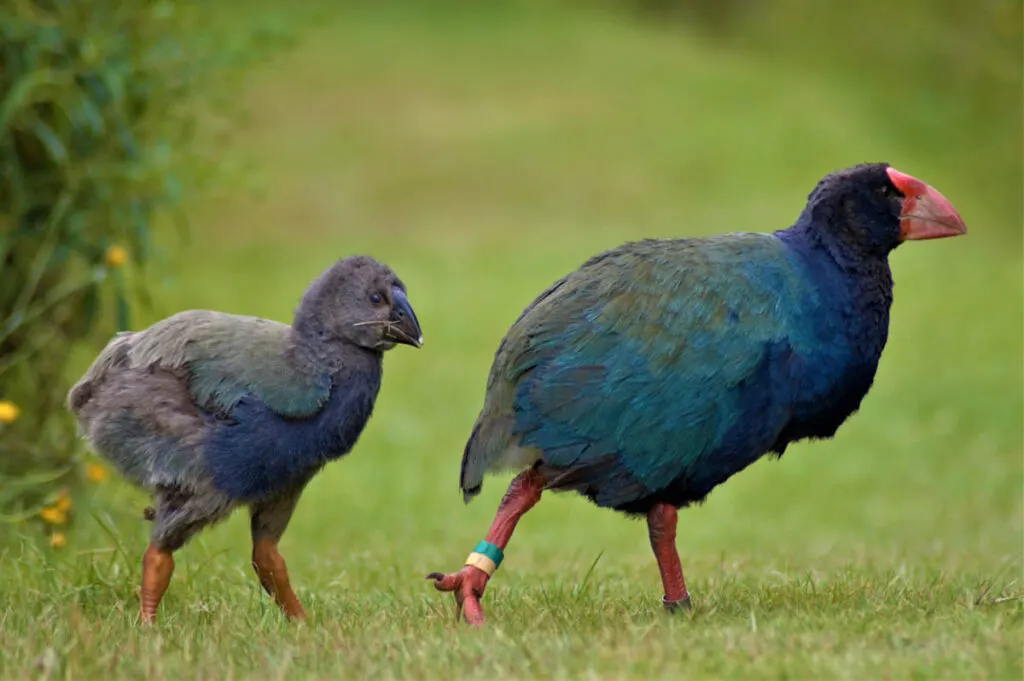
Takahes (Porphyrio hochstetteri) are flightless birds found in New Zealand. They like to stay in the areas predominated by grasslands and shrubs.
These birds are about 25 inches long and weigh from 5 to 6 pounds. Additionally, the lifespan of these creatures is pretty long and ranges between 18 to 22 years.
To develop properly and feel full, these flightless birds eat almost all day; approximately 19 hours of their day is spent eating.
Diet includes rushes, sedges, tussocks, and alpine grassland species.
Takahes were hunted for food in the past, and therefore, this caused the bird population to decline rapidly. In addition to humans, their main threats include Kuri dogs and Kiore, a pacific rat.
Flightless Cormorant
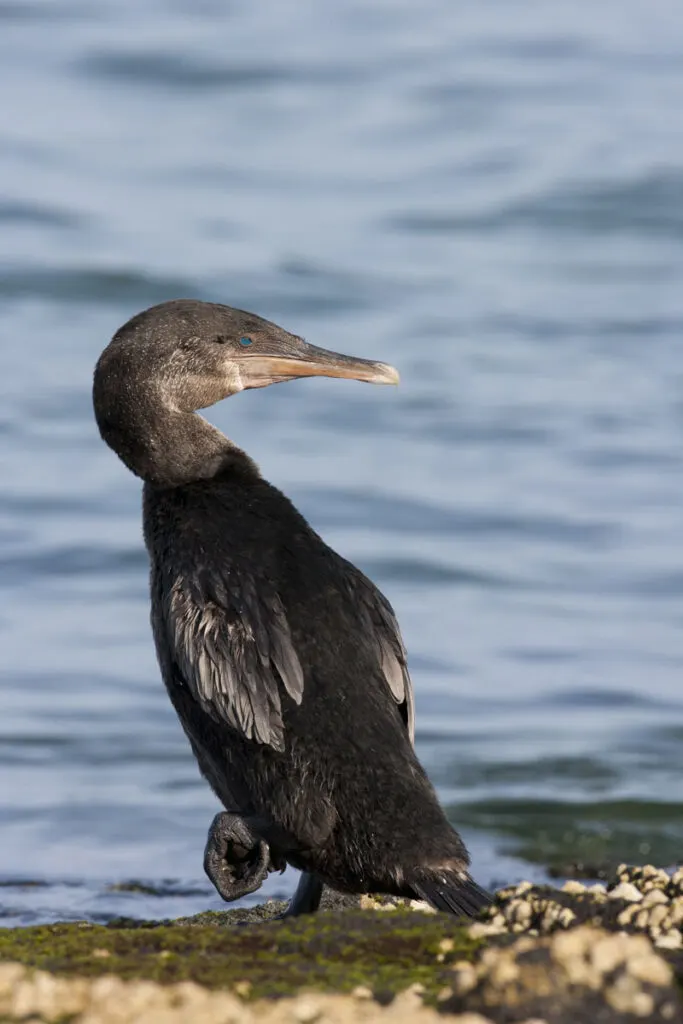
Endemic to the Galapagos Islands, flightless cormorants (Nannopterum harrisi) have a very restricted range and distribution.
They are found on rocky shores and forage in shallow waters. Flightless cormorants live in the bays, straights, and coastal regions.
This specific species is the only one in its family that can not fly. Also, they are the largest birds that cannot fly in the family.
They can reach up to 39 inches tall and weigh 5.5 to 11 pounds. They cannot fly because their wings are too small, and their breastbone keel is reduced.
Flightless cormorants are threatened mainly by humans’ impact on the environment. They are victims of oil spills and pollution.
If the opportunity occurs, cats, dogs, and rats hunt on flightless cormorants. Since they are carnivorous, specifically piscivores, their diet includes eels, rockfish, squid, fish, and octopus.
Campbell Teal
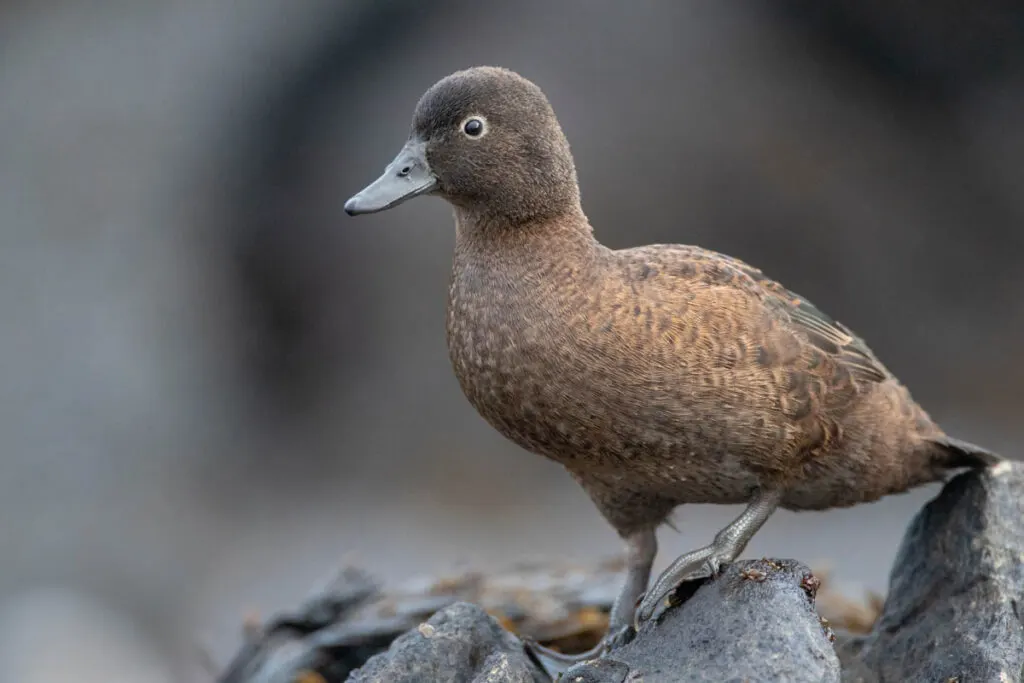
Endemic to New Zealand, Campbell teals (Anas nesiotis) are flightless birds belonging to Anas’s genus.
They are dabbling ducks that have a nocturnal lifestyle. The natural habitats of these birds include grasslands dominated by tussock grass, mega herbs, and ferns. They often stay in pathways and burrows of the petrel species.
These types of ducks have brown plumage similar to the Auckland Island teal (Anas aucklandica) and weigh no more than 1 pound. Campbell teals are considered Vulnerable on the IUCN Red List.
These non-flying birds’ diet has not yet been researched well. They have omnivorous eating habits and are believed to eat invertebrates, insects, and amphipods.
As for threats and predators, the natural predators of Campbell teal are brown skua, kelp gull, and giant petrel.
Titicaca Grebe
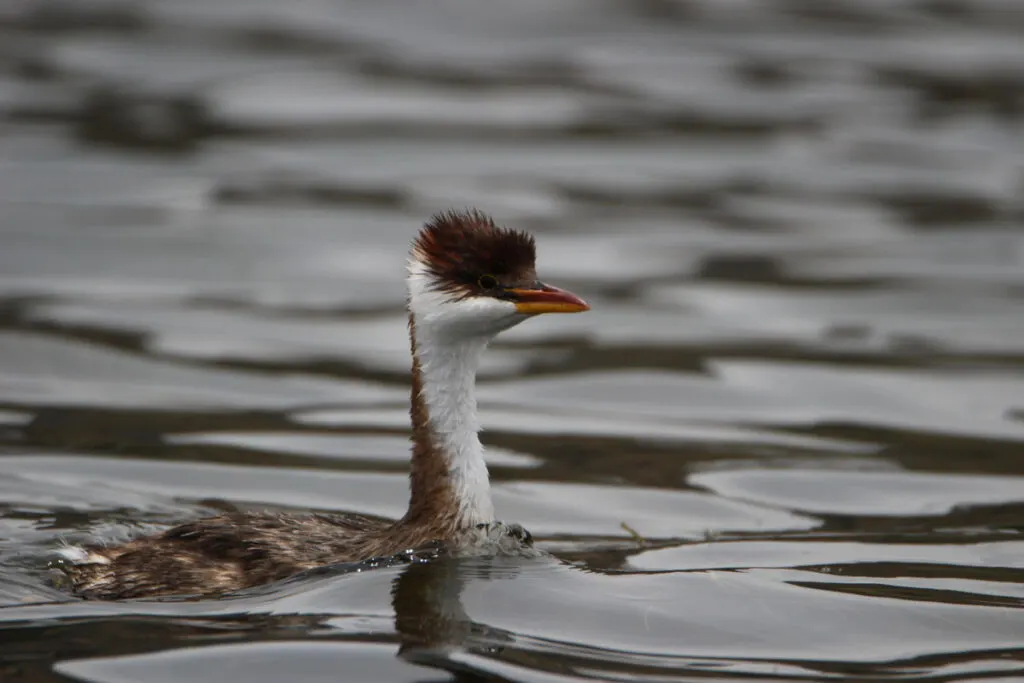
Titicaca grebes (Rollandia microptera) are found in Bolivia and Peru. You can guess from their name that their primary habitat is Titikaka lake.
Titicaca grebes are mid-size grebes, and their size varies between 11 to 17 inches, weighing no more than 1.3 pounds. These non-flying birds have red necks, white throats, and dark bellies.
Beyond that, these flightless birds typically eat fish. Orestias pupfish make up 95% of their diet.
There is not much information about their predators. However, it is recorded that they have been victims of gill nests that are located in the lake.
Guam Rail
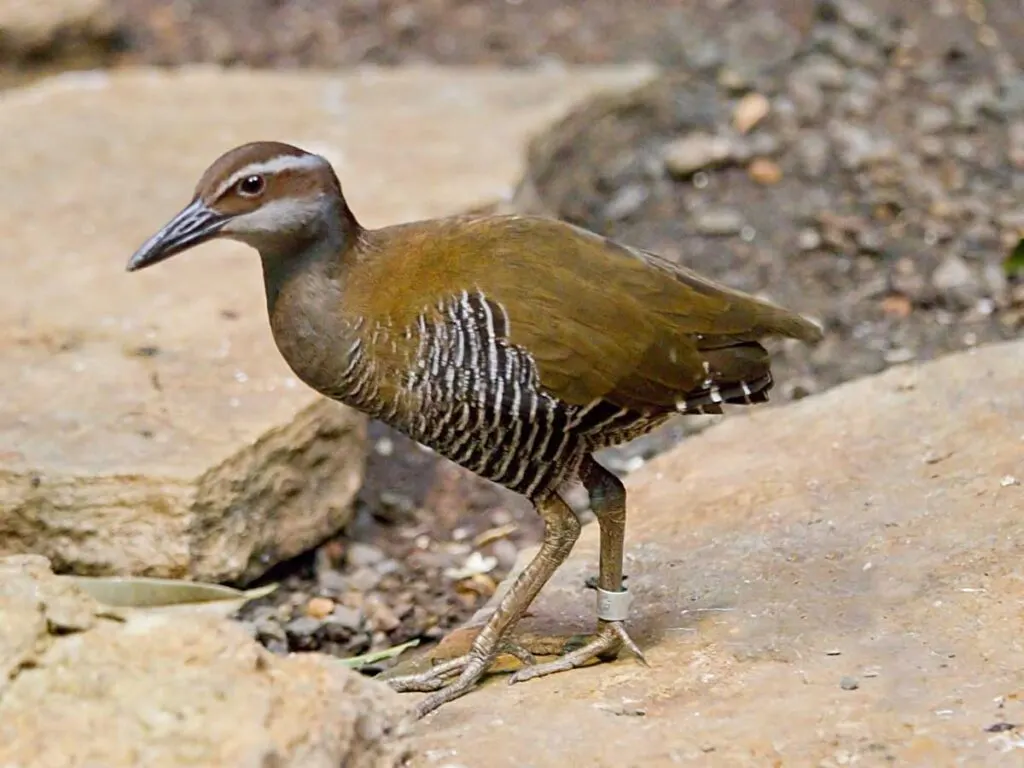
Guam rails (Hypotaenidia owstoni) are birds that cannot fly and are endemic to the United States territory of Guam. Locals refer to these birds as Ko’ko’.
Guam rails are often observed eating on field edges and along the roadsides. Additionally, they also inhabit shrubby mixed forests and mature forests.
These birds grow a total length of 11 inches and have elongated, compressed necks and breasts. This helps these flightless rails to move around in the vegetation swiftly.
Despite being omnivorous, these flightless birds prefer to eat animals, including skinks, fish, snails, geckos, insects, and slugs.
Yet, they also eat plants, fruits, and seeds, such as melons, tomatoes, and palm leaves. Even though they generally eat food off the ground, they are also seen to catch low-flying insects. Most of their foraging for food happens at dusk or dawn.
As for the predators, they are susceptible and vulnerable to predation because they are year-round ground nesters. Their main threats include rats and monitor lizards.
Tasmanian Nativehen

Tasmanian nativehens (Tribonyx mortierii) are among the 12 species of birds that are endemic to Tasmania, Australia. These birds are found in open areas with grassy vegetation and prefer to stay closer to water.
Tasmanian nativehens are stocky birds between 17 to 20 inches in length. Their upper parts are brown with white patches, while their underparts have a darker color, with bluish hints.
These non-flying birds enjoy eating vegetation, leaves, seeds, and even small insects. They look for food on the ground during the day and graze for grass shoots, herbs, and leaves.
Still, these birds have a terrible reputation among locals and are considered agricultural pests.
Even though flightless birds are often vulnerable, Tasmania nativehens benefited from the growth of crops. Their main predator was the extinct thylacine.
Extinct Flightless Birds
Moa
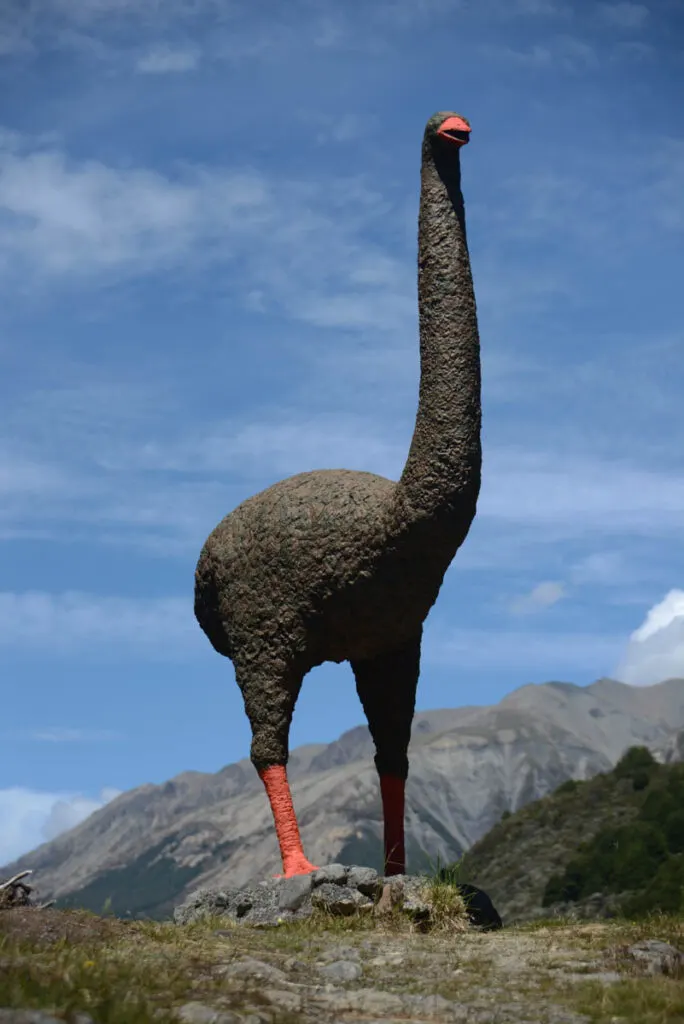
Moas are non-flying birds that were native to New Zealand. It is believed that they were 12 feet high and weighed around 510 pounds. The smallest moa species is believed to be as small as a turkey, though.
These birds without wings lived in shrublands, forests, and subalpine ecosystems and were generally herbivores. The only predator for them was Haast’s eagle.
Polynesians first arrived in New Zealand before 1300, and a little more than 100 years later, moas went extinct.
There are several reasons for their extinction, including habitat reduction caused by forest cutting and overhunting.
Elephant Bird
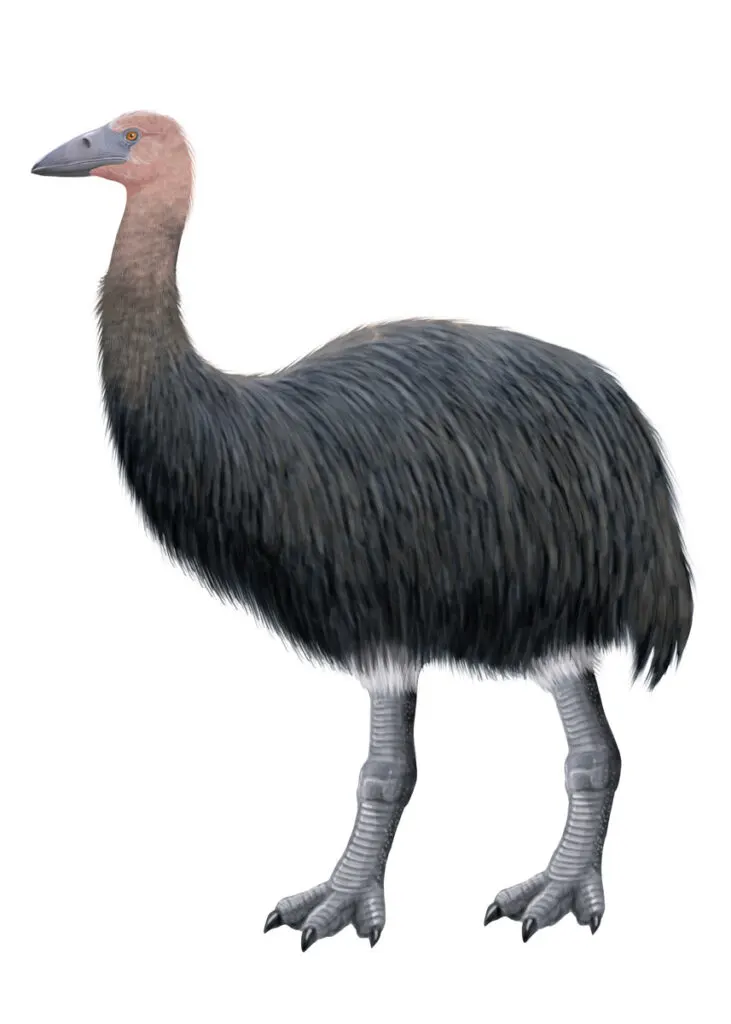
Elephant birds were flightless birds that belonged to the Aepyornithidae family. Fossils state that some species of elephant birds reached almost 10 feet tall and were around 1,600 pounds heavy. Those data make them be heaviest birds in the world.
These extinct flightless birds were native to Madagascar and went extinct in 1000-1200 CE.
It is believed that human interactions with their habitat, hunting, and egg-gathering caused their extinction. However, some scientists believe that other factors also played a significant role.
Dodo
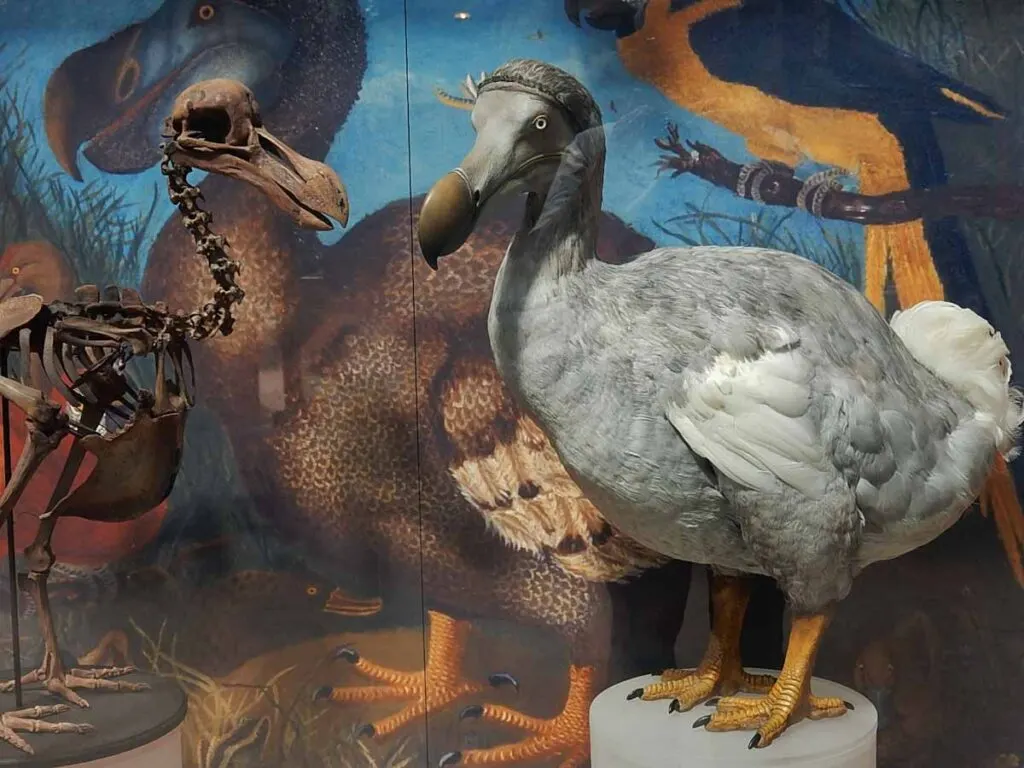
Dodo (Raphus cucullatus) was a flightless bird endemic to Mauritius. The closest living relative to dodo today is the Nicobar pigeon.
Scientists believe that dodo birds were around 3 feet tall and averaged between 23 to 39 pounds.
The only registers of dodos’ existence are paintings, drawings, and written documents that date back to the 17th century.
It is believed that they had brownish-green colored plumage, gray heads, and green, black, and white beaks.
Several factors caused the extinction of these flightless birds, but the first and major one was hunting and habitat loss.
Additionally, new animals were introduced to the area, like pigs and macaques, and the competition also played a significant role. It is believed that dodos were extinct in the 17th century.
Great Auk
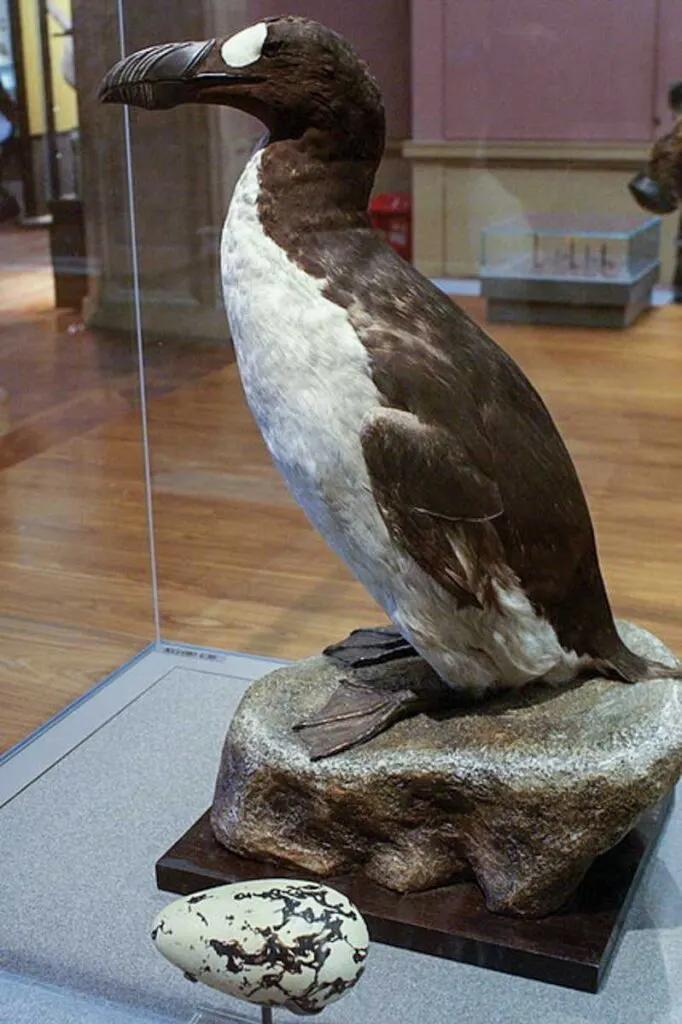
Great auks (Pinguinus impennis) are flightless birds that became extinct in the 19th century.
Unlike extant penguins, great auks used to live near the North Atlantic waters and spread as far south as Spain.
The height of these birds ranged from 30 to 33 inches, and they weighed around 11 pounds. They were characterized by a black body and white belly, similar to penguins.
According to the fossils, their beak was hooked, and their eyes had patches underneath them.
These non-flying birds preyed on capelin, Atlantic menhaden, and crustaceans. Great auks lived in the social colonies, which were quite dense.
Human overhunting for their down and climate changes that made them vulnerable to polar bears are the leading causes of extinction.
Did you enjoy learning about these non-flying birds? Then share it with your friends!
Sources
Kiwi (bird). (2022, September 2). In Wikipedia. https://en.wikipedia.org/wiki/Kiwi_(bird)

Juel Blanchard
Wednesday 5th of April 2023
Add this to your list of birds that can't fly. A Jailbird can't fly either.
Nat
Wednesday 23rd of August 2023
@Juel Blanchard, sorry to say but a jailbird is nothing; it simply does not exists in any research. It's scientifically not proved yet.